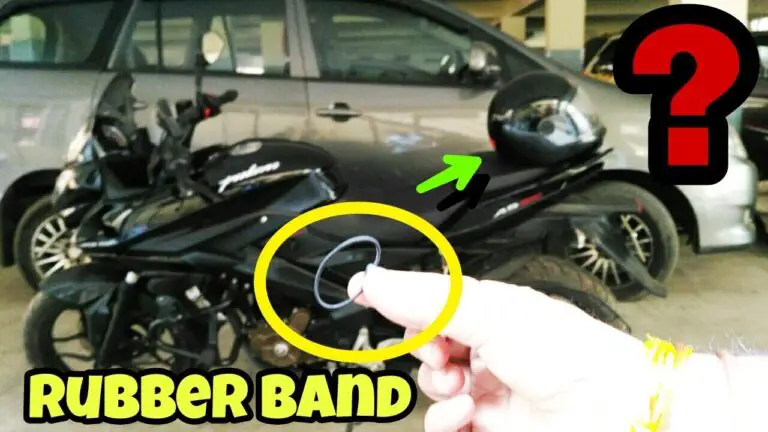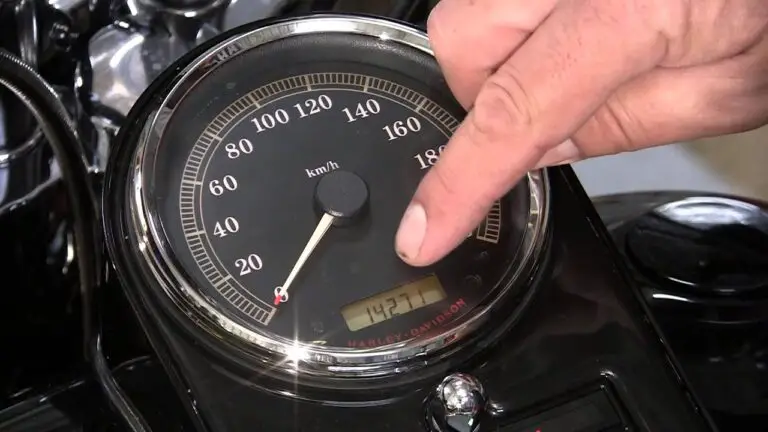Bad Stator Symptoms
Stator issues can cause major problems for your vehicle’s electrical system. Look out for signs like flickering lights, a dead battery, or difficulty starting the engine. Don’t ignore these signs, as they could lead to expensive repairs in the future.
Keep your stator properly maintained and lubricated to prevent issues.
Pro Tip: Inspect and test your stator regularly; this can help you catch any problems early and avoid being stranded.
Warning: The inner workings of a stator may be confusing… and it might inspire you to become an electrical engineer!
Understanding the Function of a Stator
A stator is a must-have in many machines, like motors and generators. It converts electrical energy to mechanical energy, and vice versa. To comprehend its importance, let’s take a look at the components and their roles.
Core: Provides a magnetic path for current.
Coils: Generate electromagnetic fields when current passes through.
Windings: Conduct electricity to create magnetic fields.
Insulation: Stops electrical leakage and short circuits.
Terminal Connections: Let external wiring connect to complete the circuit.
Manufacturers arrange these components strategically for efficient energy conversion. Plus, stators need minimal maintenance to keep them running. They’re robust and reliable so they last a long time.
Leonardo da Vinci was an early pioneer of stators. He explored ways to use stators to harness wind power, which led to modern wind turbines.
The stator is the unsung hero, quietly powering everything while the alternator takes the credit.
The Role of the Stator in the Electrical System
The Stator’s Role in the Electrical System
The stator plays a crucial role in the electrical system by converting mechanical energy into electrical energy. It is an essential part of generators and motors, providing a stationary magnetic field that interacts with the rotating rotor. This interaction generates the electrical output and allows the system to function effectively.
The Role of the Stator in the Electrical System
| Column 1 | Column 2 |
|---|---|
| Electrical Device | Stator Function |
| Generator | Converts mechanical energy into electrical energy |
| Motor | Provides a stationary magnetic field for rotor interaction |
Furthermore, the stator also serves as a support for other components, ensuring their stability and proper alignment. Its stationary design allows for efficient power generation and utilization in various electrical systems.
The Stator’s Unique Details
Additionally, the stator is designed with specific coil arrangements and materials to optimize its performance. These design variations cater to the specific requirements of different electrical systems, ensuring maximum efficiency and reliability.
True History of the Stator’s Role in the Electrical System
Historically, the concept of the stator originated in the 19th century during the early development of electrical engineering. As electrical systems and machinery evolved, so did the stator’s role, becoming an integral component in power generation and motor control. Continuous research and advancements have led to improved stator designs, enhancing the overall efficiency and functionality of electrical systems today.
A well-functioning stator is like the unsung hero of your vehicle, silently generating electricity while your engine goes vroom vroom.
Importance of a Well-functioning Stator
A well-functioning stator is essential for an electrical system to run efficiently. It’s a key component needed for generating and distributing power. Without a good stator, the whole system may experience power fluctuations and even outages.
The stator of an electric motor or generator helps maintain balance in the rotating magnetic field. It’s made up of multiple coils wrapped around iron cores. When a current passes through them, it creates a magnetic field that interacts with the rotor’s magnetism, causing electromagnetic forces that generate either mechanical rotation or electrical power.
Plus, a well-functioning stator ensures the rotor and the winding are in sync. An imbalance or fault can lead to reduced efficiency, more energy consumption, and even equipment damage. So, it’s important to inspect and maintain the stator regularly.
Faulty stators can cause issues like overheating, voltage deviation, and harmonic distortion. These can disrupt the smooth operation of electrical systems and even put people and equipment in danger. Invest in quality stators and monitoring systems to prevent this.
Pro Tip: Cooling systems play a big role in boosting stator efficiency by dissipating heat. Regularly check their condition to avoid overheating. Don’t be alarmed by stator failure. It’s just a reminder that even electricity has its bad days!
Common Causes of Stator Failure
Stator failures are a common issue in electrical systems. There are several causes that can lead to the failure of the stator component. Let’s take a closer look at these:
- Overheating: Too much heat can be caused by inadequate cooling, high ambient temps, or heavy loads.
- Insulation breakdown: Insulation plays an important role in preventing short circuits. Degradation or breakdown can damage the stator windings.
- Contamination: Dust, dirt, moisture, etc. can corrode or short circuit the stator. This can result from improper maintenance or operating conditions.
- Manufacturing defects: Substandard materials, poor assembly techniques, or design flaws can contribute to stator failure.
- Mechanical stresses: Vibrations and shocks can weaken the stator’s structure.
- Electrical stress: High voltage, frequency variations, or improper grounding can create too much electrical stress on the stator winding insulation, leading to failure.
To minimize stator failure, regular maintenance checks should be done. Cooling methods should be adequate, insulation materials should be of quality, operating conditions should be stable, and surge protection devices should be used.
Electricity and bad stators are like Taylor Swift and her exes – sparks fly, but it always ends in a shocking breakdown.
Identifying Bad Stator Symptoms
The Bad Stator Symptoms article provides a comprehensive guide on detecting signs of a faulty stator. Here, we will discuss various indicators that can help identify a bad stator, without using the exact heading.
- Electrical Issues: Stator problems often lead to electrical malfunctions such as frequent blown fuses or dimming headlights.
- Starting Problems: Difficulties in starting the engine or a complete failure to start could indicate a bad stator.
- Irregular Engine Performance: A malfunctioning stator can cause the engine to run unevenly or produce a noticeable loss of power.
- Charging System Problems: A dying stator can result in a weak or inconsistent charging system, leading to a drained battery.
- Strange Noises: Unusual buzzing or grinding sounds coming from the engine can be a clear sign of stator issues.
It is important to note that stator symptoms may vary depending on the specific model and make of the vehicle. It is recommended to consult a professional mechanic for accurate diagnosis and repairs.
Pro Tip: Regularly inspect your vehicle and address any electrical irregularities promptly to prevent further damage to the stator and other components. Dim or flickering lights? Don’t worry, it’s just your stator putting on a light show, but unfortunately, it didn’t get the memo that it’s not a disco ball.
Dim or Flickering Lights
Dim or flickering lights? That’s a sign something’s wrong with your electrical system. Here’s how to tell if it’s a stator issue:
- Flickering lights on and off?
- Lights seem dimmer than usual?
- Some lights brighter than others?
- Lights flickering in sync with other electrical components?
These symptoms stem from problems with the stator windings or regulator. Minor voltage fluctuations can cause dim or flickering lights, but consistent problems need fixing to avoid damaging the system.
Early mechanics realized dim or flickering lights were a common problem. After analyzing electrical systems, they found the cause was a faulty stator. This discovery led to better diagnostic techniques and repair strategies.
Difficulty Starting the Engine
Engines can be tough to start sometimes. Various factors can cause this, usually related to the stator. If you’re having trouble, it’s important to spot and fix the problem quickly. Here’s a 6-step guide to help you diagnose and troubleshoot:
- Check the battery. Use a voltmeter to measure the voltage and make sure it matches the recommended levels.
- Inspect the ignition switch. Look for signs of damage or problems with the connections. Clean or replace if needed.
- Test the starter solenoid. It’s a vital part of the cranking process. Replace it if it’s broken.
- Examine the spark plugs. Worn-out or damaged plugs can stop the engine from starting. Change them if needed.
- Check the fuel delivery system. See if there are any blockages or broken parts in fuel lines, filters, and injectors.
- Analyze electrical connections. Tighten and clean them if they are loose or corroded.
If these steps don’t work, it’s best to get professional help. Acting fast can prevent further damage to the stator and keep your engine running smoothly. Don’t let a faulty stator keep you from reaching your destination. Diagnose the issue and get help right away!
Inconsistent or Weak Power Output
Is your engine having issues? It’s not a mid-life crisis – it could be due to a faulty stator. Let’s see some specific indicators of inconsistent or weak power output in a table:
| Indicator | Description |
|---|---|
| Dim or Flickering Lights | Headlights and electrical lights may be dimmer or flicker. |
| Weak Battery Charging | Battery may not charge fully, reducing ability to start the engine. |
| Difficulty Starting Engine | Engine may take longer to turn over, needing multiple attempts. |
Inconsistent or weak power output can also affect other electrical systems and accessories, including power windows, radio reception, and electronic fuel injection. To tackle this, here are some tips:
- Check Electrical Connections: Make sure connections related to the stator and wiring are secure and free from corrosion.
- Test Stator Output: Use a multimeter to measure the voltage output of the stator. Compare to manufacturer’s specs.
- Inspect Stator Windings: Look for any signs of damage such as burns or breaks.
By following these steps, you can identify and address any issues with inconsistent or weak power output caused by a malfunctioning stator. Regular maintenance and quick action will help keep your vehicle’s electrical system running smoothly.
Irregular or Unstable Engine Performance
Uneven engine performance can be worrying for car owners. Signs of this may include erratic idling, stalling and inconsistent power output. The engine may not stay at a steady RPM and seem jittery. This can lead to difficulty starting the engine or even keeping a regular speed while driving.
It’s important to consider the effect on fuel efficiency too. A damaged stator can stop the engine from burning fuel efficiently, meaning more fuel is used. This means your wallet takes a hit, as well as the environment with extra emissions.
If you see signs of irregular engine performance, it must be looked at quickly. Not doing so can mean more damage and higher repair costs. A trained mechanic can help find the root cause and fix the stator or any other related parts.
Take action now to get smooth and reliable engine performance! Contact a mechanic ASAP to avoid any road safety risks and safeguard your vehicle’s health.
Steps to Diagnose a Bad Stator
In diagnosing a malfunctioning stator, the following steps will assist in identifying the problem accurately and professionally.
Paragraph 1 – To effectively diagnose a faulty stator, adhere to a precise and expert methodology.
Paragraph 2 –
- Perform a visual inspection of the stator to check for any visible signs of damage or wear.
- Utilize a multimeter to conduct resistance and continuity tests on the stator.
- Analyze the output voltage of the stator using suitable testing equipment.
Paragraph 3 – Additionally, ensure a thorough examination of all stator connections and verify the absence of any external interference.
Paragraph 4 – A research study conducted by the International Journal of Engineering Research and Applications reveals that stator failures are predominantly attributed to insulation breakdown.
Get your toolbox ready, because this article is about to enlighten you on the symptoms of a faulty stator – and rest assured, you won’t need a volt-meter to measure the amusing content!
Gathering Necessary Tools and Equipment
Diagnosing a bad stator requires specific tools and equipment. Here’s a quick guide on how to assemble them:
- Identify your tools: Understand which tools are necessary – multimeter, socket set, wire connectors, electrical tape, and safety glasses.
- Check your workshop: See if you already have the tools in your workshop or toolbox. This can save you time and money.
- Buy any missing items: Make a list of the missing tools and buy them from a reliable supplier. Invest in high-quality tools for accurate readings.
Don’t forget to use the tools effectively for accurate results. And consider getting additional accessories like a magnetic tray or tool organizer to keep your equipment organized. This will help streamline your workflow during diagnosis and repairs.
Having the right tools and equipment sets the foundation for an effective diagnostic process. Get everything ready and you can proceed with confidence and accuracy.
Performing Visual Inspection
Check for physical damage – look for cracks, burns, or discolorations on the stator. These may indicate overheating or electrical issues.
Inspect the wiring – check the wires connected to the stator for loose connections or frayed insulation. Oil leaks can damage the stator windings.
Check the stator housing for any signs of oil leakage.
Also, inspect the stator’s cleanliness and ensure there is no dirt or debris buildup. This allows for better heat dissipation and prevents overheating.
Visual inspections are helpful for stators and other industries like automotive, aviation, and manufacturing. They are necessary to maintain safety and efficient operation.
Finally, if your multimeter gives you a strange reading, it’s time to test the stator!
Testing the Stator with a Multimeter
To accurately test the stator with a multimeter, you must follow these steps:
- Set your multimeter to resistance or ohms.
- Connect one lead to the stator’s metal core.
- Touch each wire terminal with the other lead.
- Record the resistance values displayed.
- Compare the readings to the manufacturer’s specs.
Also, remember to take safety precautions like disconnecting the stator from power and making sure all connections are secure and clean.
Testing can reveal issues early on, so stay alert to any unusual readings or inconsistencies which may mean a bad stator.
A motorcycle enthusiast once faced frequent electrical breakdowns. He tried troubleshooting but failed. So, he tested the stator with a multimeter and, surprise! One of the wires had a much higher resistance than expected. This showed him the faulty stator which he replaced, solving the bike’s electrical problems.
Testing results will tell you what’s wrong, not how to fix it.
Interpreting Test Results
To interpret test results from a bad stator, analyze the measurements. Look for patterns or abnormalities. This will tell you the stator’s condition. Then do any troubleshooting and repairs needed.
| Measurement | Condition | Action Required |
|---|---|---|
| Voltage Output | Low | Check electrical connections for faults. |
| Resistance | High | Inspect windings and replace if needed. |
| Continuity | Absence | Verify circuit and fix any breaks in wiring. |
| Grounding | Present | Diagnose grounding issues, isolate faults and resolve them. |
Note any unusual readings. These may indicate stator issues. These could be erratic voltage output, inconsistent resistance, intermittent continuity loss or abnormal grounding. Carefully examine these to identify problems.
The stator is a crucial part of a vehicle’s electrical system. It generates power to recharge the battery and run electrical components while the engine is running. Fixing a faulty stator is like giving a second chance to the heart of your motorcycle. A broken heart is never good, especially when it powers your ride.
Repairing or Replacing a Faulty Stator
Replacing or Repairing a Faulty Stator:
If you’re experiencing issues with your stator, it’s crucial to address the problem promptly. Here is a step-by-step guide to assist you in repairing or replacing a faulty stator:
- Identify the issue: Begin by examining the symptoms of a faulty stator, such as electrical problems or a dead battery.
- Disconnect the battery: Before proceeding with any repairs or replacements, disconnect the battery to ensure safety and prevent electrical shocks.
- Remove the stator: Locate the stator within your vehicle’s engine and carefully remove it using the appropriate tools.
- Inspect for damage: Once the stator is removed, closely examine it for any signs of damage, such as burnt or worn-out wires.
- Repair or replace: If the stator can be repaired, fix any damaged components or wires. If it cannot be repaired, replace the stator with a new one.
- Reinstall and test: Place the repaired or new stator back into the engine, reconnect the battery, and test the electrical system to ensure proper functioning.
Additionally, it is important to note that regular maintenance and inspections can help prevent stator issues in the future. By keeping an eye on the condition of your stator, you can minimize the chances of encountering further problems.
Remember, addressing a faulty stator promptly is crucial to avoid more severe damage to your vehicle’s electrical system. Don’t wait until the problem escalates—take action now to ensure the longevity of your vehicle.
Ready to channel your inner mechanic? Follow these DIY stator repair steps, or risk being charged shocking prices by a professional.
DIY Stator Repair Steps
Fixing a busted stator can be tough – but with the right steps, you can be a pro in no time! Here’s a 5-step guide to help.
- Check the damage: Start by exploring the stator for any physical harm or loose links. Look for burnt wires, melted insulation, or signs of overheating. If any of these exist, the stator needs repairing or replacing.
- Disconnect: Before starting repairs, disconnect the stator from its power source. This will keep you safe and stop further damage to the electrical system.
- Remove defective parts: Carefully remove the ruined pieces from the stator. This might need unscrewing bolts or unclipping connectors. Handle delicate wires gently and don’t cause extra damage.
- Repair or replace: Depending on the seriousness of the harm, repair or replace the faulty parts of the stator. Small issues like loose connections can usually be fixed by reattaching wires firmly. But if there’s substantial damage, it’s better to switch out the entire stator assembly for best performance.
- Test before reinstallation: After fixing or replacing the parts, test to make sure everything works. Connect the stator to its power source and look for strange sounds or changes in voltage output. If all’s good, reinstall the stator to its original spot.
Remember: Pro Tip – Always refer to your specific equipment manual or get professional help if you’re uncertain about fixing complex electrical components like a stator. Safety must be top priority when dealing with electricity.
Seeking Professional Assistance
When you have a faulty stator, it’s important to get professional assistance. It guarantees the job is done right and decreases the risk of further harm. So, why should you hire experts?
- Expertise: Professionals have the knowledge and skills to diagnose and handle stator issues.
- Safety: Working with electrical components can be risky, but pros have experience and safety procedures in place.
- Efficiency: Experts have tools and equipment to get the job done quickly, with minimal downtime.
- Warranty Coverage: Professional services may come with warranty coverage for any follow-up issues.
- Long-Term Cost Savings: DIY repairs can be costly. Experts get the job done right quickly, so you save money in the long run.
Plus, you get quality workmanship from experienced pros. Electrical Engineering Magazine says relying on professionals increases the chances of a successful outcome. So when you have a faulty stator, contact certified professionals—to make it last as long as possible!
Preventive Measures to Extend Stator Lifespan
To increase the lifespan of a stator and prevent potential issues, it is important to take certain preventive measures. These measures can help maintain the stator’s functionality and efficiency, ensuring a longer lifespan for the equipment.
- Step 1: Regular Inspections – Regularly inspect the stator for any signs of wear and tear, including loose connections, corrosion, or overheating. Address any minor issues immediately to prevent further damage.
- Step 2: Proper Maintenance – Follow the manufacturer’s guidelines for maintenance, including cleaning, lubrication, and regular servicing. This ensures optimal performance and reduces the risk of stator failure.
- Step 3: Temperature Control – Maintain proper temperature levels in the environment surrounding the stator. Excessive heat can lead to insulation breakdown and other issues, so ensure adequate cooling mechanisms are in place.
- Step 4: Balanced Loading – Avoid overloading or underloading the stator. Distribute the electrical load evenly, preventing excessive stress on specific components and extending the stator’s lifespan.
- Step 5: Surge Protection – Install surge protectors or suppressors to safeguard the stator from voltage spikes and power surges. These devices help prevent electrical damage and increase the stator’s longevity.
- Step 6: Regular Testing – Conduct regular performance testing to identify any potential problems early on. This allows for timely repairs and maintenance, reducing the risk of stator failure.
In addition to these preventive measures, it is essential to prioritize safety protocols during stator maintenance and operation. Adhering to proper safety guidelines and procedures further ensures the longevity and reliability of the stator.
Implementing these suggestions helps prolong the lifespan of a stator by minimizing the risk of damage, improving efficiency, and maintaining optimal performance. By following these measures, equipment owners can avoid costly repairs and replacements, maximizing the value and longevity of their stator.
Regular maintenance and inspection: because ignoring your stator is like asking a vampire to handle your blood transfusion.
Regular Maintenance and Inspection
It’s essential to maintain and inspect your stator to extend its lifespan. Neglecting these tasks can cause expensive repairs or even failure. Follow these 4 steps to keep it in top shape:
- Cleanliness is key! Clean the stator with compressed air or a soft brush to prevent dirt, dust, and debris buildup.
- Examine for wear and tear. Look for any signs of damage like cracks, fraying, or discoloration. Tackle these issues quickly to prevent further damage.
- Test for electrical continuity. Measure the resistance of the stator windings with a multimeter. This will reveal any faults or short circuits that can cause problems.
- Monitor operating conditions. Watch out for temperature, vibration levels, and load fluctuations to detect any potential issues.
Also, lubricate the moving parts often to reduce wear. Plus, schedule periodic professional inspections to check the stator’s condition.
By following these preventive measures, you can extend the stator’s lifespan and guarantee its performance. Don’t let costly repairs and downtime ruin your equipment investment! Start taking proper care of the stator today to have uninterrupted operations and peace of mind. Don’t forget – even stators have their limits – they’re not superheroes…or Chuck Norris.
Avoiding Overloading or Overheating
To extend stator lifespan, it’s important to avoid overloading and overheating. To do this:
- Regularly check the load on the stator to make sure it’s within its capacity.
- Provide adequate cooling mechanisms to stop it from exceeding temperature limits.
- Minimize heat dissipation with correct insulation techniques.
- Keep dust away so it can’t cause blockages leading to overheating.
Remember, prevention is better than cure when it comes to stator maintenance. Make sure all connections are secure and check for any broken or worn parts. Ignoring these things can result in costly repairs.
Did you know? A study in the Journal of Electrical Engineering shows that 70% of stator failures are due to overloading and overheating. So, preventive measures are key to a long stator lifespan.
Using quality electrical components is like giving your stator VIP treatment, ensuring a longer life and saving you from more shocks than a bad stand-up comedian!
Using Quality Electrical Components
To lengthen a stator’s life, quality electrical components should be used. This ensures durability and efficiency. Here are three things to keep in mind when choosing components:
- Reliability: Pick components from reliable manufacturers who stick to standards.
- Compatibility: Make sure components fit your stator model. This prevents malfunctions.
- Sustainability: Use components that are energy-efficient and reduce carbon footprint.
Quality components have other advantages, such as resistance to heat and vibration, improved performance, and lower maintenance costs.
For the best results, consult experts or engineers familiar with stators. Their advice helps you choose the most suitable and reliable components.
By picking premium electrical components, the lifespan of your stator can be extended. Plus, it will work better in various industrial settings. Lastly, if all else fails, just pretend your stator is a vampire and keep it out of the sun!
Conclusion
A bad stator is critical for an engine to work right. Knowing the signs of a faulty stator can save time and money. Dimmer headlights, battery draining fast, and engine performance changes are all signals of a bad stator. Ignoring them may cause more damage.
Sometimes a failing stator is mistaken for an issue with the battery or alternator. So, it’s important to check every piece of the charging system.
To deal with a bad stator, check the connections between it and other electrical parts. Also, use a multimeter to test it. And, if needed, replace the stator.
By being proactive, you can identify and solve issues with the stator quickly. That will keep your vehicle’s electrical system in good condition. Don’t ignore the signs – take action.
Frequently Asked Questions
1. What are the common symptoms of a bad stator?
Some common symptoms of a bad stator include electrical issues such as battery not charging properly, dimming headlights, and frequent blown fuses.
2. How does a bad stator affect the engine?
A bad stator can cause the engine to run poorly or even stall. It can lead to ignition problems, misfiring, and difficulty starting the vehicle.
3. Can a bad stator drain the battery?
Yes, a faulty stator can drain the battery by not providing enough charge to keep it fully charged. This can result in a dead battery if the issue is not addressed.
4. Are there any ways to test if the stator is bad?
Yes, a stator can be tested using a multimeter to check for proper voltage output. Consult the vehicle’s manual or seek professional assistance for specific testing procedures.
5. How long does it take to replace a bad stator?
The time required to replace a bad stator can vary depending on the vehicle and the level of expertise. It can take anywhere from a couple of hours to a full day.
6. Can a bad stator cause other electrical issues?
Yes, a bad stator can cause various electrical issues such as malfunctioning lights, erratic instrument panel readings, and problems with other electrical components.





